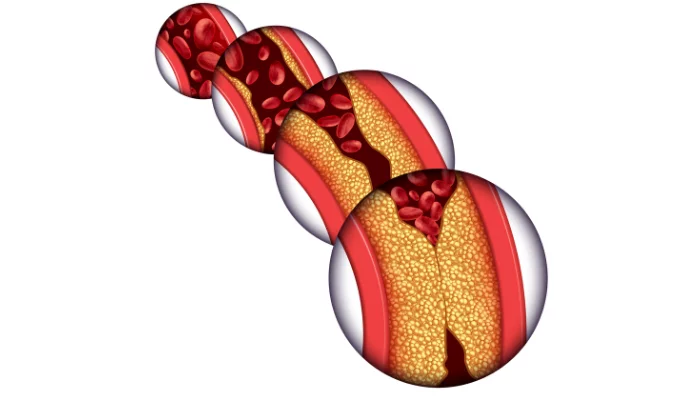
You don’t need to be a cardiologist to know that high cholesterol and high blood pressure are not generally good things. If you have a family history of cardiac issues such as heart disease or stroke, you’re likely to be more keenly aware of these issues than most. However, a less commonly discussed problem is the risk of peripheral artery disease (PAD), which affects an estimated 6.5 million Americans over the age of 40. This matters because PAD, while a serious health condition, has a higher likelihood of going undiagnosed or misidentified.
How does high cholesterol affect my arteries?
Having too much cholesterol in your blood can cause damage to blood vessels and lead to plaque buildup in the walls of your arteries. Patients with high cholesterol are at a higher risk of developing cardiovascular disease and are more susceptible to acute events like heart attack and stroke.
How does high blood pressure affect my arteries?
High blood pressure can damage your arteries by making them lose elasticity and become stiff and brittle. This in turn can decrease the flow of oxygenated blood to your heart, as well as other important organs such as your brain, kidneys, and even your eyes.
What is the relationship between high blood pressure, high cholesterol and PAD?
Peripheral artery disease is caused by blockages or narrowing of the arteries in the limbs and extremities. Peripheral arterial disease is a serious condition that can lead to heart attack, stroke, amputation, or even death if left untreated. High blood pressure and high cholesterol are both risk factors for developing peripheral arterial disease. Sustained high blood pressure (greater than 120/80) can make the arteries less elastic, and can promote the formation of plaque in the arterial walls, increasing the risk of blockages. High levels of cholesterol can also lead to plaque formation and blockages in the peripheral arteries.
Is there a cure for PAD?
There is no cure for peripheral arterial disease which is why prevention, as well as early detection and treatment is so important. Lifestyle changes such as eating a heart-healthy diet, maintaining a healthy body weight, engaging in regular aerobic exercise, and not smoking can all lower your risk of developing PAD. These healthy changes can also help lower your blood pressure and cholesterol levels, both important to preventing or slowing the progression of the disease. Simple screening tests such as arterial ultrasounds and ankle-brachial-index (ABI) testing are quick, non-invasive methods to check your arteries and circulation. Early detection and early treatment of PAD can reduce the risk of very serious complications which can lead to amputation.
What can be done to help lower the risk of developing PAD in regards to having high cholesterol or high blood pressure?
- Changes in diet: Reducing the amount of saturated fat, trans fats, and sugars in your diet can help lower your cholesterol. Eating more fiber-rich foods and green leafy vegetables like spinach and kale can also help. For blood pressure, reducing your sodium and alcohol intake can help, as can getting more potassium in your diet.
- Exercise: Regular aerobic exercise can lower your LDL (low-density lipoprotein, or ‘bad’) cholesterol and raise your HDL (high-density lipoprotein, or ‘good’) cholesterol. Exercising regularly and maintaining an active lifestyle can also be helpful in controlling your blood pressure.
- Maintaining a healthy body weight: Being overweight can increase your cholesterol and blood pressure. Losing weight and maintaining a healthy body weight can help.
- Medication: In some cases, lifestyle changes alone might not be enough to control cholesterol levels or blood pressure. When this happens, medication might be recommended in addition to optimal lifestyle. Medications like statins are used to treat high cholesterol. They also help to lower inflammation in the body, which can prevent or slow the progression of plaque build up in blood vessel walls. Anti-hypertensive medications are used to treat high blood pressure.



